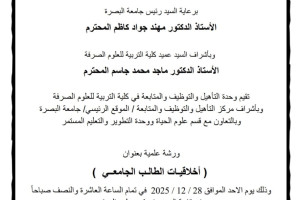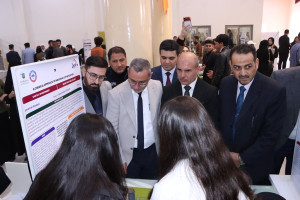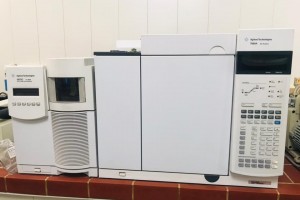
The College of Education for Pure Sciences, Department of Biology, discussed a master's thesis on (Inhibition of the glycolysis pathway and its relationship to biological activity in tumor cells). The thesis presented by the researcher (Ahmed Naeem Abdel) included: Cancer is the most serious health problem facing society, and it is the second leading cause of death. Globally, the health and economic impacts of this disease appear to be increasing and rising steadily. In recent decades, scientists and researchers have focused their efforts on finding alternative treatment methods for traditional treatments as modern and unique strategies to reduce unwanted side effects on the other hand, increasing the selective inhibitory effect of tumor cells. Moreover, to improve the chances of recovery for cancer patients, these treatments are called "targeted therapies", examples of which include starvation therapy, natural product therapy, and combined therapy. Five cell lines were used in this study, one normal (HBL-100) and four cancerous lines (SK-GT-4, A549, AMGM-5, and HCAM) obtained from the Cell Bank Unit, Tissue Culture Laboratory, Department of Life Sciences, College of Education for Pure Sciences, University of Basrah. Cell cultures were maintained and multiplied in RPMI-1640 medium supplemented with 10% bovine serum while the cells were incubated in conditions suitable for their growth in the human body. In this study, specialized materials were used to stop the first enzyme of the energy production pathway in HK cancer cells, and these materials are MH, 2DG, and Citrullus colocynthis oils. The study aimed to evaluate the role of the combined synergistic effect of these materials on normal and cancerous cell lines and induce selective starvation of cancer cells through targeted inhibition of the first enzyme of the glycolysis pathway (Warburg phenomenon) and induce cell cycle arrest in its early stages and stimulate severe stress pathways on the endoplasmic reticulum and energy deficiency that leads to stimulation of programmed cell death pathways.
The current study was divided into two levels:
The first level is molecular simulation In silico level study in order to know the extent of the association of the study materials as a ligand with the target protein as a receptor.
Molecular simulation results showed that MH has a 13-angstrom bond with HK at the active site, and 2DG has a 12-bond with the active site of the same enzyme using a paid subscription program, MOE v.2014.
Given the lack of local studies and their scarcity globally, the colocynth plant was chosen as a natural anti-cancer substance. After extracting its essential oils using two methods, hot and cold extraction, the results of the gc-ms analysis showed that the colocynth oil contains many biologically active compounds, including phenols, resins, carotenoids, and others. It is worth noting that the oil of this plant has been used as an antibacterial, antifungal, and antiparasitic agent, locally and globally.
Cytotoxicity results showed that MH has a unique selective effect on cancer cells without harming normal cells, as the inhibition rates reached 73% and 29%, respectively. 2DG had a toxic effect after accumulating inside cancer cells and was selective due to its spatial structure similar to glucose, the inhibition rates were 71% in cancer cells and 31% in normal cells, after 72 hours of exposure under incubation conditions. In addition, the natural products had a high inhibitory behavior against cancer cells, as the inhibition values in hot and cold oil reached 64 and 60 respectively in cancer cells and 35 and 37 respectively in normal cells. Statistical analysis was performed using GraphPad v.9 program and the results showed that there was no effect of a semi-lethal dose for normal cells, unlike in cancer cells. The study focused on the combined effect,
The inhibition rate reached 88% when MH-2DG was combined and showed great harmony and consistency in the selective starvation and inhibitory action of cancer cells, while the action between them was completely opposite and opposite to lead to the effect of one substance on the other in its toxicity, so that the inhibition rate in normal cells reached 24%.
The results of the scratch technique showed that the above materials stopped the physiological processes of proliferation and invasion of malignant cells, while normal cells were able to grow and multiply after being treated for 96 hours and viewed under an inverted microscope.
The results of the study of programmed cell death with the aforementioned dyes showed that the materials have the ability to induce and stimulate the internal pathways of mitochondria to activate and release internal cell death signals represented by cytochrome c. While normal cells were not affected and were stained green, indicating their activity and continuous growth.









